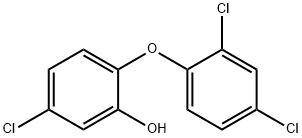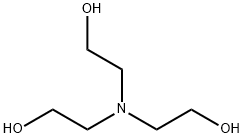Diisopropanolamine(DL- and meso- mixture) , 98% , 110-97-4
Synonym(s):
1,1′-Iminodi-2-propanol;1,1-Iminodi-2-propanol;Diisopropanolamine;Diisopropanolamine, Bis(2-hydroxypropyl)amine
CAS NO.:110-97-4
Empirical Formula: C6H15NO2
Molecular Weight: 133.19
MDL number: MFCD00004531
EINECS: 203-820-9
PRODUCT Properties
| Melting point: | 42-45 °C(lit.) |
| Boiling point: | 249-250 °C745 mm Hg(lit.) |
| Density | 1.004 g/mL at 25 °C(lit.) |
| vapor pressure | 0.02 hPa (20 °C) |
| refractive index | 1.4615-1.4635 |
| Flash point: | 260 °F |
| storage temp. | Store below +30°C. |
| solubility | H2O: miscible |
| pka | 14.54±0.20(Predicted) |
| form | Low Melting Solid |
| Specific Gravity | 0.99 |
| color | Colorless to light yellow |
| PH | 11.4 (100g/l, H2O, 20℃) |
| Odor | Fishy; ammoniacal. |
| explosive limit | 1.6-8.0%(V) |
| Water Solubility | 870 G/L (20 ºC) |
| Sensitive | Air Sensitive & Hygroscopic |
| Merck | 14,3195 |
| BRN | 605363 |
| Stability: | Hygroscopic |
| LogP | -0.79 at 20℃ |
| Surface tension | 34.5 mN/m at 323.15K |
| CAS DataBase Reference | 110-97-4(CAS DataBase Reference) |
| NIST Chemistry Reference | Diisopropanolamine(110-97-4) |
| EPA Substance Registry System | Diisopropanolamine (110-97-4) |
Description and Uses
Bis(2-hydroxypropyl)amine (Diisopropanolamine) is used to study its effects upon choline uptake and phospholipid synthesis in Chinese hamster ovary (CHO) cells. It is a versatile chemical that is widely used as an emulsifier, stabilizer, surfactant, and chemical building block. It can neutralize pH, act as a buffer (stabilize pH), or add basicity (alkalinity) to a solution. Major applications include personal care products, metalworking products, and natural gas purification. Diisopropanolamine is also used in coatings, paint strippers, paper, photographic intermediates, plastics, polyurethanes, and textiles. It is frequently used to neutralize fatty acids and sulfonic acidbased surfactants.
Safety
| Symbol(GHS) |  GHS07 |
| Signal word | Warning |
| Hazard statements | H319 |
| Precautionary statements | P264-P280-P305+P351+P338-P337+P313 |
| Hazard Codes | Xi |
| Risk Statements | 36 |
| Safety Statements | 26 |
| RIDADR | 3259 |
| WGK Germany | 1 |
| RTECS | UB6600000 |
| F | 3-34 |
| Autoignition Temperature | 290 °C |
| TSCA | Yes |
| HS Code | 2922 19 00 |
| HazardClass | 8 |
| PackingGroup | III |
| Hazardous Substances Data | 110-97-4(Hazardous Substances Data) |
| Toxicity | LD50 orally in Rabbit: 4765 mg/kg LD50 dermal Rabbit 8000 mg/kg |




